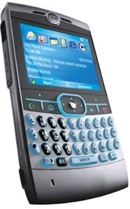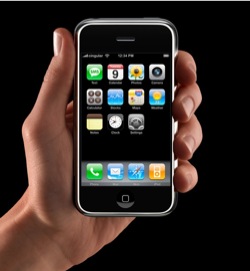

Cingular Apple iPhone vs. Verizon Motorola Q
Analysts complaining about the iPhone compare it in price to cheap, popular phones, but in features to pricey phones that aren't selling well. Why are they being so disingenuous? Well, there’s simply a huge amount of money in play in the mobile industry, and the iPhone has turned conventional wisdom upside down.
Apple's mobile strategy is so outrageous that many analysts have decided the safest bet is to denigrate the iPhone. That way, if it fails they can look smart, and if it takes off they can be surprised. If they told you what they really thought, they'd risk losing their position in the industry if they turned out to be wrong.
Apple's price point is significantly higher than other popular phones, but it also offers a lot more, making it difficult to compare against other options. Here's a look at the real price differences in mobiles, and how they can be distorted by service subsidies and long term contracts.
A followup article will look at how big the phone market really is, and why Apple is dramatically understating its real intentions for the iPhone. At the end, I've put together a comparison of popular smartphones and how they stack up next to the iPhone.
How to Lie About Phone Prices
Microsoft's Steve Ballmer recently scoffed at the iPhone for being the "most expensive phone in the world," starting at $499 with a two year contract.


Ballmer compared it to the Windows Mobile Motorola Q, which is being offered for as little as $99 with a contract. He failed to point out what that contract subsidy actually means, because doing so would have made his comments look ridiculous.
In order to qualify for the $99 Motorola Q, Verizon Wireless requires a two year contract with a voice plan of at least $39, and a data plan of at least $45, or a minimum "Core Choice" voice and data package of $79.99.
Over two years, that minimum $80 contract amounts to $1920 in base service fees. Verizon "recommends" its Extra Choice plan as the default service plan on its website. That plan costs $109.99, or $2640 across two years.
For customers who will be paying $2000-2500 or more for service--not including taxes, extra minutes, and other service fees--will a $400 phone premium matter?
And might customers notice any feature differences between the Motorola Q--a basic button phone without even stylus input--and the iPhone? Ballmer only said the iPhone won’t appeal to business customers because it “lacks a keyboard” like the Q’s.
Millions and Millions and Millions and Millions = 4 Million
Ballmer also said Microsoft has sold “millions and millions and millions” of phones, while Apple hasn’t sold any. In reality, only around 4 million Windows Mobile phones sold in 2006, up from around two million in 2005. Apple says it plans to sell 10 million in 2008, more than twice Microsoft's entire ecosystem of Windows Mobile.
How’s that going to happen, given that Apple now sells zero phones, and Microsoft’s Windows Mobile is on four million and growing? Well for starters, the millions of customers looking at the iPhone in the Apple Store won’t even have the Motorola Q or other Windows Mobile phones to compare against the iPhone.
Part of the reason the Zune didn’t go anywhere was because nobody was actively selling it, particularly not the iPod’s home base of the Apple Store. Apple similarly had troubles selling the Mac Performa at Sears in the 90s.
Apple iPhone vs. Motorola Q
To everyone shopping at Cingular, the iPhone will be right next to the Motorola Q. How can the $99 Q phone compare to the $499 iPhone? It depends on how many customers are aware of the price of their contract.
Neither Cingular nor Apple has released the minimum service plan requirements of the iPhone contract referenced in the Macworld Expo keynote, but the service plans Cingular offers with for the Treo 680 are similar to Verizon's: a minimum $40 voice plan--or a "suggested" $80 voice plan--and a $40 data plan.
Since any subsidized smartphone requires a minimum $80/month service plan for two years, the cost of the phone essentially becomes negligible in comparison to phone service costs.
In other words, rather than being the 500% difference Ballmer suggested, the iPhone will really be an extra $15 per month, less than a 20% premium over the cost of owning the Windows Mobile Motorola Q.
Motorola Q: $99 with mail-in rebates + basic $80 service plan = $2019 across two years, or $85/month.
Apple iPhone: $499 + basic $80 service plan = $2419 across two years, or $100/month.
Apple's customers are already smart enough to understand why they paid $1100 for a Mac Book rather than $700 for an entry level PC laptop, so perhaps they'll be smart enough to see the difference between the iPhone and Q.
The iPhone is a real touch screen pocket computer with Cover Flow iPod functions, movie playback, a real web browser, Google Maps, a slick photo viewer, an intelligent user interface, and visual voicemail, while the Q is a far simpler phone with a Windows Start Button. It doesn't approach it in actual functionality, let alone sex appeal.
From that perspective, a 20% premium doesn't seem significant. It certainly won't be to anyone who wants the iPhone because it's the iPhone.





The Real Cost of Hardware
The unlocked price of the (still unavailable) quad band GSM version of the Motorola Q is bizarrely listed at $899.99, but Amazon gives the Verizon CDMA version a list price of $399.
It is only available from Amazon with the service plan and rebates that make it $99. That would indicate that Verizon is subsidizing the Q for about $300.
If Cingular's subsidy for the iPhone is similar, the actual hardware cost of the 4 GB iPhone would be around $800, nearly twice the list cost of the Motorola Q.
That indicates the iPhone has twice the hardware budget, but is available to consumers for only 20% more. After some digging, it appears that the Motorola Q is the phone that is overpriced, not Apple’s iPhone. As they say, you get what you pay for.
The Big Money in Mobile Phone Service
Ballmer's misleading argument about the cost of the iPhone exposes the great trouble the mobile industry goes through to obfuscate pricing and create the illusion that phones are nearly free.
Service providers want their customers to sign up for a fancy phone, because it results in a more expensive service plan sale. The jump from a basic $40/month voice-only plan to a smartphone’s $80/month voice and data plan means an additional $1000 from each customer every two years.
The sticker shock of mobile phone prices is reduced with a subsidy. A $99 Q sounds affordable, while a $400 Q would sound awfully steep. With a service plan subsidy, providers can sell customers on a fancier phone than they would otherwise buy. The provider doesn't care about the phone sale, but rather the higher revenues that fancier phones can generate for them.
Selling more minutes is also critical. If a fancier phone encourages more use, it will bump customers up to an even more expensive plan. After the entry level $40 voice plan, Amazon lists Verizon’s $100 voice plan as the most popular among customers of the Motorola Q.
With the required $40 data plan, a $100 voice plan makes the cost of two years of service $3360. With that kind of revenue, Verizon's $300 subsidy for the Q is chump change.
The I Want It Effect
Business customers who routinely pay far more than $100 for service per month are not going to freak out about a nearly invisible premium for their hardware if it gives them a phone that does more, saves them time, and makes them look cool.
For everyone else, the 20% premium might be noticeable. However, another aspect that the Windows Mobile defenders don’t seem to grasp is that Apple’s customers have been happily buying iPods in the $500 price range over the last five years. Those iPods were less practical luxury items than the iPhone, but Apple sold millions.
In the same half decade, Microsoft has been struggling to sell WinCE based PDAs, Windows Smartphones (which lack a touch screen) and Pocket PC based phones (which have a Palm-like stylus touch screen), as well as Origami Tablet PCs running the full Windows XP. The company simply can’t find a price to sell any of it in any quantity.
The problem isn’t really the price point, but the desirability factor. There’s just nothing sexy about Tablet PCs or high end Windows Mobile phones.
Low end Windows Mobile phones like the Q don’t really offer anything new either, but at least they can sell in small numbers when offered nearly for free with a subsidy, given that there’s not many better alternatives.
Recall that Windows similarly sells only when it’s attached to a PC at an invisible cost. Over 80% of Microsoft’s revenues come from OEM copies of Windows bundled on new PCs. Those OEM copies are a fraction of the price (around $30) of full retail copies (around $300). That’s the basis of the Windows Price Paradox.
2007: the Planets Align
Beyond the $99 Motorola Q with its $2000 service commitment, other mobiles phones are either entirely free with a cheaper service package, or are fairly expensive luxury items. All suffer from the Device Problems In Search of a Solution: the user interface, stability, sync, and DRM issues that only Apple seems able to fix.
It’s all beginning to sound an awful lot like the music player industry in 2001, on the eve of the iPod introduction. Except instead of being a dead economy following the dotcom crunch, Apple is launching the iPhone into a healthy vacuum of smartphone demand, few worthy competitors, and strong foreign dollars.
The iPhone is also a followup to the reinvention of the Mac using Intel processors in 2006 and sales of 45 million iPods within the last year, and will be planted in the fertile ground of Apple’s buzzing retail stores. It would be hard to imagine a set of planets better aligned.
How does Apple plan to target the vast fortunes of the mobile phone industry? The next article Smartphones: iPhone and the Big Fat Mobile Industry takes a look.
Next Articles:
This Series


 |
|
 |
|
 Del.icio.us |
Del.icio.us |
 Technorati |
About RDM :
:
Technorati |
About RDM :
:

Saturday, January 20, 2007






 Send Link
Send Link Reddit
Reddit NewsTrust
NewsTrust






